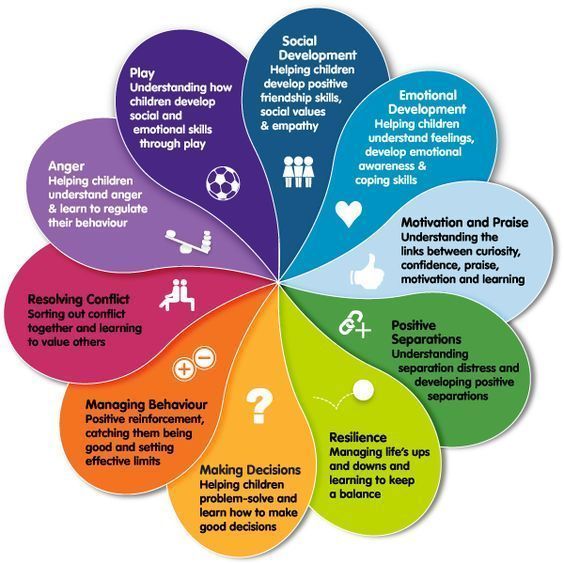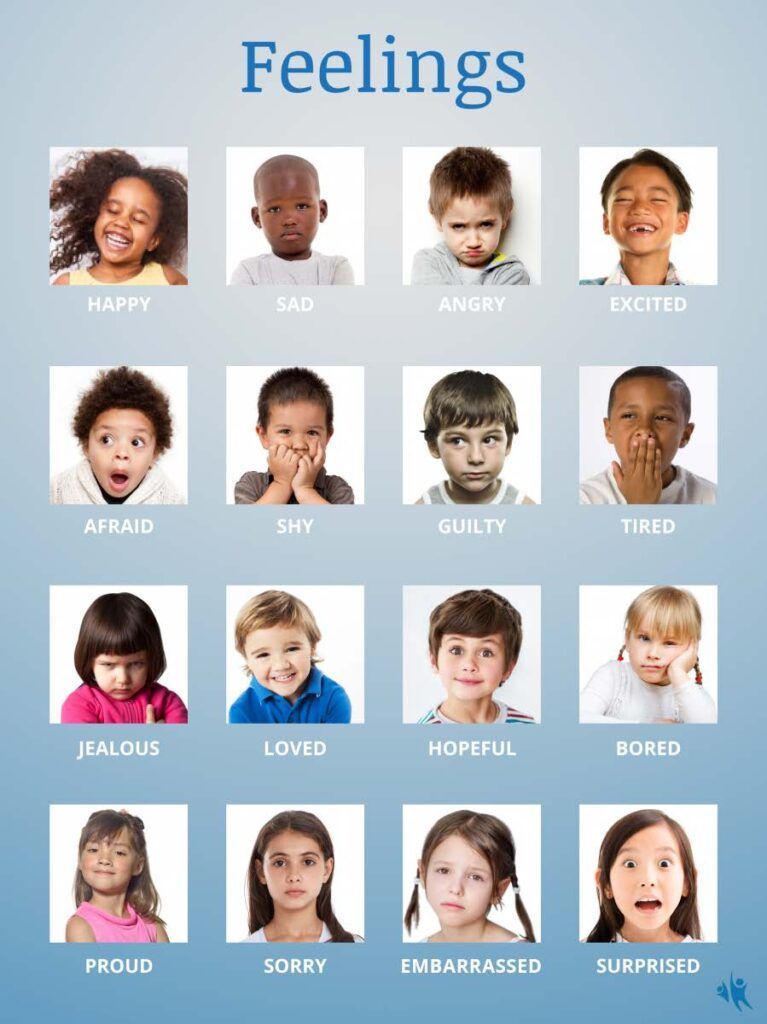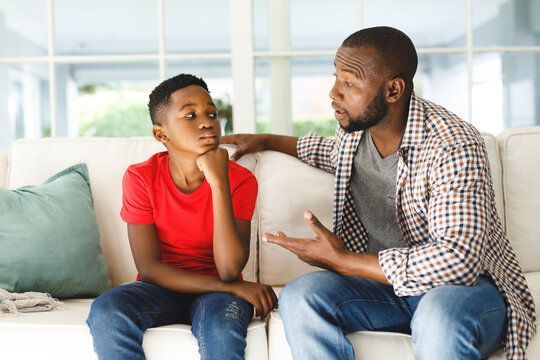“One of the most important tasks of parenthood is helping children learn to deal with their emotions. All children experience periods of stress in their lives and need the emotional skills to deal with it. Children’s emotional resilience, or ability to cope with their feelings is important to their long-term happiness, wellbeing and success in life. Emotional resilience involves six key skills: recognizing and accepting feelings, expressing feelings appropriately, having a positive outlook, developing effective ways of coping, being able to deal with negative feelings, and being able to manage stressful life events.” – Triple P: Positive Parenting Program, Raising Resilient Children Seminar Series

RECOGNIZING AND ACCEPTING FEELINGS
Throughout a child’s development they are receiving messages and information from the world around them, shaping the way they acknowledge and understand feelings. Some simple ways to help children enhance this development follow.
Accept different emotions – Often children receive the unwritten message that the only acceptable emotion is happy, do your best to acknowledge and accept more than just happy.
Accept all emotions; the good, the bad and the ugly. Letting children know it is okay to feel the tough and challenging emotions of mad, sad, disappointed, frustrated and more.
Talk about feelings –Talk about them regularly. Pointing out how a character on their favorite show or in their favorite book are simple ways to start these conversations.
Share your own feelings - It is okay to express our own emotions at times, modeling that we too feel sad, upset and even angry from time to time.
Help your child recognize emotions – When your child is expressing an emotion, label it. Tell them what you are seeing or hearing them do that leads you to believe they are feeling a specific emotion.
EXPRESS FEELINGS APPROPRIATELY
Children learn by watching, this is no different when learning how to handle, express and cope with feelings. They are constantly watching us, the adults, when we are expressing and responding to small and big emotions. It is important to do our best and modeling socially appropriate ways to express and manage emotions. Acceptable ways of expressing emotions are related to cultural and family expectations. It is important for children to learn about culture through rituals and traditions relating to emotions. Weddings, funerals and festivals teach children how their family and culture deal with celebration and loss.

Help your child talk about feelings – Avoid telling children how to feel, rather encourage them to share with you what they are thinking and feeling about the events happening around them or to them. When they start to talk to you about their feelings, stop what you are doing and give them your undivided attention. You can summarize what they share with the classic sentence starter “It sounds like you feel…”.
Reward appropriate expression of feelings – Give positive feedback and praise to children when they do express their emotions in a developmentally appropriate way. For example, “I think you handled your anger well. I saw you get very upset, take a deep breath and walk away. Wow!”
Deal with inappropriate expression of feelings – Decide how you plan to handle the inappropriate expression of feelings like being hurtful, disrespectful, yelling, swearing or hitting others. Consistent consequences that help children learn more acceptable ways of expressing their feelings are best.
- Acknowledge the negative emotion and problem first.
- Tell them specifically and clearly what to stop doing. Short, sweet and to the point.
- Implement a logical consequence like quiet time to encourage self-regulation.
BUILDING A POSITIVE OUTLOOK
Feelings are related to what children are thinking about and telling themselves. They can only pull from the experiences they have had so far. Parents can help children develop a positive sense of self through optimism.
Encourage Optimism – Looking on the bright side of situations and finding the positive is a skill, one that can be taught and encourages. We must model this optimism. Encourage children to set realistic goals and their use of creativity and initiative to meet them. Helping children find clubs or activities they are interested in and can find success after hard work helps teach this skill.
Encourage Curiosity – Curiosity can truly become a challenge to us as parents; the questions of “why”, taking things apart or getting into things we wish they would not. Going back to the above statement, have optimism, looking at this curiosity as a strength. Curiosity is how children learn about and become interested in the world around them. Encourage this by supporting their interests in new activities, let them explore and learn about the world around them. Be available when they are excited to show you something, ask questions and teach them how to find more information about it.
Encourage Contentment – Helping children have contentment involves teaching them to be accepting, tolerant and appreciative of what they have. Model being appreciative and grateful. Talk to children about the highlight of their day. Encourage empathy and discussing other people’s point of view. Discussing acceptance of the things we cannot control or change. Boredom is an acceptable feeling to have.

DEVELOPING COPING SKILLS
Coping skills are the tools we use to help us regulate our emotions and solve the problems that may be causing or influencing negative emotions.
Help Your Child Become a Problem Solver – Sometimes we as parents fall into the trap of solving all our children’s problems. We do not like to see them upset and sometimes it is just easier to do things ourselves. You are encouraged to allow children to be in the “yuck” for a bit. Ask them questions that will help them develop skills to solve problems on their own. Encourage them to solve the problem lets them know you believe in them and develops their ability to solve problems independently one day.
- State the problem clearly.
- Come up with some possible solutions.
- Think about the good points and bad points of the possible solutions.
- Decide on the best solution or plan.
- Try it out by putting the plan in to action.
- Review how the solution worked and make any necessary changes.
Encourage Positive Thinking – Encouraging again that positive thinking and self-talk is helpful here too. Encouraging children to think about the same thing in a different way to effect how they feel about it. Play games that prompt your child to imagine what someone might be thinking or feeling. Point out helpful and unhelpful ways of thinking about a situation.
Help Your Child Learn to Relax – many of our days are go, go, go. The skill of relaxation is something that must be taught. Provide a good role model of how to manage stress by looking after yourself and taking time to relax. There are many tools, apps and websites that can help with teaching yoga, belly breathing, muscle relaxation and more.
Help Your Child Look for Support – Discuss with children that everyone needs to talk about their feelings, especially when they become overwhelming. Finding safe people to talk to is important. Help them find a trusted family member, friend, teacher or counselor.
DEALING WITH NEGATIVE FEELINGS
Negative emotions are part of everyday life, we need to help children not let them become overwhelming by teaching them how to manage them. Common negative emotions include anger, anxiety, boredom, disappointment, distress, guilt, jealousy, loneliness, loss, rejection and sadness. It is not our job to protect our children from these emotions, but rather help them work through them by prompting problem solving.
Help Your Child Manage Negative Emotions – Notice when your child is upset and pay attention. Asking them what is wrong and listening to what they say. Label their feelings and help coach them through ways to solve the problem and feel better. Sometimes they simply want us to listen and sit in the yuck with them.
Help Your Child Learn to Cope on Their Own – Help your children deal with these negative emotions on their own by setting a good example of remaining calm. Talking with them about their anxious feelings and giving them small things to try when they want to feel better. Remember to praise them when they try new things and face their fears, reminding them when they were successful and overcoming a challenge. Simply saying, “I believe in you”, sends a positive message that you believe in them.


COPING WITH STRESSFUL LIFE EVENTS
When children are stressed by uncertainty due to a specific event ensure them of their safety and be available to help them through their emotions when needed. Allow them to be upset and encourage them to talk about it when they are ready. Encourage them to use the skills you have been working on to enhance their resiliency and check in with them often. Often in times of stress we can all struggle to remember how to solve a problem or cope. Seek professional advice if the stressful event is causing more long-term effects on you or your child.
Child and Adolescent Behavioral Health's Early and Middle Childhood Program Manager Larissa Haring (LPC, OCPC, ECMHC) is an expert in the field of early childhood development with 20 years of experience. Larissa is the facilitator of the Positive Parenting Program (Triple P), which engages parents in topics parents are struggling with to be better parents. If you are looking for help to be a better parent, call C&A at 330-433-6075 or text @triplepca to 81010.
RECENT POSTS












